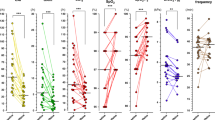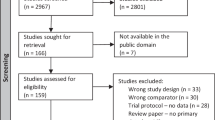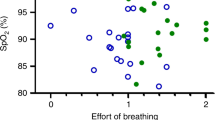Abstract
Objective:
To determine if apneic preterm infants currently treated with methylxanthines develop evidence of sleep deprivation from cumulative arousal and motor activational effects.
Study Design:
Sleep, wake, arousal and actigraphic movements were monitored in extubated clinically stable premature infants (N=37). Neonates were free of other medications for >72 h and were grouped based on methylxanthine exposure: >5 days with caffeine (n=14), >5 days theophylline (n=13) or no prior exposure (n=10).
Result:
Duration of methylxanthine treatment predicted increased arousals, wakefulness and actigraphic movements, and decreased active sleep. Recording from 1200 to 0500 hours, methylxanthine-treated groups showed reductions in all arousal parameters: waking state, number of wake epochs, brief arousals and composite arousal index, and shorter fast-burst, sleep-related motility than untreated controls.
Conclusion:
In apneic preterms, chronic methylxanthine treatment appears to produce sleep deprivation secondary to the stimulatory action of methylxanthines on arousal and motor systems.
This is a preview of subscription content, access via your institution
Access options
Subscribe to this journal
Receive 12 print issues and online access
$259.00 per year
only $21.58 per issue
Buy this article
- Purchase on Springer Link
- Instant access to full article PDF
Prices may be subject to local taxes which are calculated during checkout




Similar content being viewed by others
References
Aranda JV, Turmen T . Methylxanthines in apnea of prematurity. Clin Perinatol 1979; 6: 87–108.
Kato I, Franco P, Groswasser J, Kelmanson I, Togari H, Kahn A . Frequency of obstructive and mixed sleep apneas in 1023 infants. Sleep 2000; 23: 487–492.
Harris MC, Baumgart S, Rooklin AR, Fox WW . Successful extubation in infants with respiratory distress syndrome using aminophylline. J Pediatr 1983; 103: 303–306.
Scannion J, Chin K, Morgan M, Durbin G, Hale K, Brown S . Caffeine or theophylline for neonatal apnoea? Arch Dis Child 1992; 67: 425–428.
Romagnoli C, De Carolis MP, Muzii U, Zecca E, Tortorolo G, Chiarotti M et al. Effectiveness and side effects of two different doses of caffeine in preventing apnea in premature infants. Ther Drug Monit 1992; 14: 14–19.
Steer PA, Henderson-Smart DJ . Caffeine versus theophylline for apnea in preterm infant. Cochrane Database Syst Rev 2000; 2: CD00273.
Carnielli VP, Verlato G, Benini F, Rossi K, Cavedagni M, Filippone M, Baraldi E, Zacchello F . Metabolic and respiratory effects of theophylline in the preterm infant. Arch Dis Child 2000; 89: 39–43.
Mayer CA, Haxhiu MA, Martin RJ, Wilson CG . Adenosine A2A receptors mediate GABAergic inhibition of respiration in immature rats. Appl Physiol 2006; 100: 91–97.
Holditch-Davis D, Scher M, Schwartz T, Hudson-Barr D . Sleeping and waking state development in preterm infants. Early Hum Dev 2004; 80: 43–64.
Sahni R, Schulze KF, Stefanski M, Myers MM . Methodological issues in coding sleep states in immature infants. Dev Psychobiol 1995; 28: 85–101.
Hayes MJ, Kumar SP, Plante L, Delivoria-Papadopoulos M . Spontaneous motility in premature infants: Features of behavioral activity and rhythmic organization. Dev Psychobiol 1993; 26: 279–291.
Thoman EB, Holditch-Davis D, Raye JR, Phillipps AF, Rowe JC, Denenberg VH . Theophylline affects sleep–wake state development in premature infants. Neuropediatrics 1985; 16: 13–18.
Curzi-Dascalova L, Aujard Y, Gaultier C, Rajguru M . Sleep organization is unaffected by caffeine in premature infants. J Pediatr 2002; 140: 766–771.
Chardon K, Bach V, Telliez F, Cardot V, Tourneux P, Leke A et al. Effect of caffeine on peripheral chemoreceptor activity in premature neonates. J Appl Physiol 2004; 96: 2161–2166.
Porkka-Heiskanen T, Strecker RE, Thakkar M, Bjorkum AA, Greene RW, McCarley RW . Adenosine: a mediator of the sleep-inducing effects of prolonged wakefulness. Science 1997; 276: 1265–1268.
Franco P, Seret N, Van Hees NJ, Scaillet S, Vermeulen F, Gosswasser J et al. Decreased arousals among healthy infants after short-term sleep deprivation. Pediatrics 2004; 114: 192–197.
Symanski ME, Hayes MJ, Akilesh MK . Patterns of premature newborns’ sleep–wake states before and after nursing interventions on the night shift. J Obstet Gynecol Neonatal Nurs 2002; 31: 305–313.
Myers MM, Fifer WP, Schaeffer L, Sahni R, Ohira-Kist K, Stark RI et al. Effects of sleeping position and time after feeding on the organization of sleep–wake states in prematurely born infants. Sleep 1998; 21: 343–349.
Prechtl HFR . Problems of behavioral studies in the newborn infant. In: Lehrman DS, Hinde RA, Shaw E (eds.). Advances in the Study of Behavior, vol. 1 Academic Press: New York, 1965; 75–98.
Anders T, Emde R, Parmelee A . A Manual of Standardized Terminology, Techniques, and Criteria for Scoring of States of Sleep and Wakefulness in Newborn Infants. UCLA Brain Information Service: Los Angeles, 1971.
Hayes MJ, Mitchell Hayes MJ, Mitchell D . Spontaneous movements during sleep: temporal organization and changes with age. Dev Psychobiol 1998; 32: 13–21.
Giganti F, Ficca G, Cioni G, Salzarulo P . Spontaneous awakenings in preterm and term infants assessed throughout 24-h video-recordings. Early Hum Dev 2006; 82: 435–440.
Landolt H, Reter JC, Tonz K, Gottselig JM, Khatami R, Buckelmuller I et al. Caffeine attenuates waking and sleep electroencephalographic markers of sleep homeostasis in humans. Neuropsychopharmacology 2004; 29: 1933–1939.
Kahn A, Franco P, Scaillet S, Groswasser J, Dan B . Development of cardiopulmonary integration and the role of arousability from sleep. Curr Opin Pulm Med 1997; 3: 440–444.
Schectman VL, Harper RM, Wilson AJ, Southall DP . Sleep state organization in normal infants and victims of the sudden infant death syndrome. Pediatrics 1992; 89: 865–870.
Denenberg VH, Zeidner LP, Thoman EB, Kramer P, Rowe JC, Philipps AF et al. Effects of theophylline on behavioral state development in the newborn rabbit. J Pharm Exp Ther 1982; 221: 604–608.
Acknowledgements
This work was financially supported by the Eastern Maine Medical Center, Bangor, ME, USA and the University of Maine Office for Research.
Author information
Authors and Affiliations
Corresponding author
Rights and permissions
About this article
Cite this article
Hayes, M., Akilesh, M., Fukumizu, M. et al. Apneic preterms and methylxanthines: arousal deficits, sleep fragmentation and suppressed spontaneous movements. J Perinatol 27, 782–789 (2007). https://doi.org/10.1038/sj.jp.7211820
Received:
Revised:
Accepted:
Published:
Issue Date:
DOI: https://doi.org/10.1038/sj.jp.7211820
Keywords
This article is cited by
-
Sleep movements and respiratory coupling as a biobehavioral metric for early Alzheimer’s disease in independently dwelling adults
BMC Geriatrics (2023)
-
What do we know about the sleep effects of caffeine used to treat apnoea of prematurity? A systematic review of the literature
Molecular and Cellular Pediatrics (2023)
-
Caffeine is a respiratory stimulant without effect on sleep in the short-term in late-preterm infants
Pediatric Research (2022)
-
Optimizing respiratory management in preterm infants: a review of adjuvant pharmacotherapies
Journal of Perinatology (2021)



